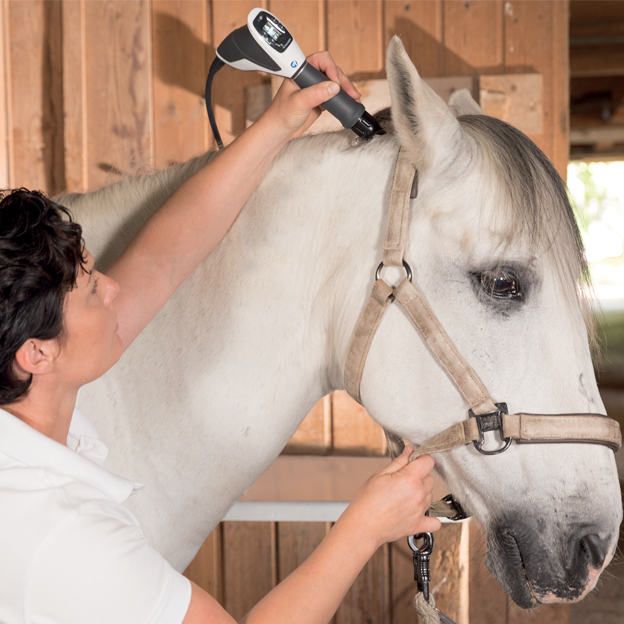Equine Therapy Success Stories: Actual Individuals, Genuine Emotional Improvements
Wiki Article
Examining the Efficiency of Laser Treatment in Equine Treatment for Injury Recovery
The assessment of laser therapy's effectiveness in equine injury rehabilitation hinges on multiple factors, including recuperation time, discomfort reduction, and cells regrowth. Veterinarians frequently observe exceptional outcomes with laser therapy contrasted to standard approaches, placing it as a vital aspect in equine care.Understanding Laser Treatment
Laser treatment has actually ended up being a critical tool in vet medication, especially in the treatment of equine conditions. Recognized for its non-invasive nature and efficiency, laser therapy involves the application of details wavelengths of light to boost tissue repair and reduce swelling. This restorative modality is increasingly preferred for its capability to accelerate the recovery procedure in horses experiencing a variety of bone and joint injuries and persistent problems.The primary system behind laser treatment is its capacity to enhance cellular features. In addition, laser therapy promotes vasodilation, enhancing blood circulation and oxygen distribution to broken tissues, thus accelerating recuperation.
In equine medication, laser therapy is particularly helpful for problems such as tendonitis, osteo arthritis, and injury healing. The technique is lauded for its pain-relieving properties, allowing equines to gain back wheelchair and feature extra swiftly. Veterinarians also appreciate its minimal adverse effects compared to other treatment modalities, making it a trustworthy and secure alternative for equine treatment.

Just How Laser Treatment Functions

Upon absorption, these photons set off a series of biochemical adjustments, boosting mitochondrial function and resulting in increased adenosine triphosphate (ATP) manufacturing. This increase in ATP accelerates mobile metabolic process, advertising cells repair work and regrowth. Additionally, laser therapy regulates inflammatory feedbacks by influencing cytokine levels and reducing oxidative stress and anxiety, consequently minimizing discomfort and swelling.
One more significant element of laser therapy is its duty in enhancing microcirculation. The treatment promotes vasodilation, enhancing blood flow and oxygen shipment to damaged tissues (Equine Therapy). This assists in the elimination of cellular particles and supports the spreading of fibroblasts and collagen synthesis, vital for wound healing
Scientific Evidence
The efficiency of laser treatment in equine therapy has actually been substantiated through various clinical studies, showcasing its therapeutic potential across a range of conditions. A study conducted by Turner et al. (2012) showed that steeds treated with low-level laser treatment (LLLT) for ligament injuries showed sped up healing compared to those receiving conventional treatments.Similarly, study by Johnson and colleagues (2015) concentrated on equine muscle injuries, disclosing that laser treatment substantially accelerated muscle mass fiber regeneration and reduced muscle rigidity. These searchings for were supported by histological evaluations showing improved muscle mass cells organization. Furthermore, professional analyses have shown that laser treatment can ease chronic conditions such as osteo arthritis. A research study by Smith et al. (2018) reported that horses with osteoarthritic joints experienced remarkable pain alleviation and boosted variety of motion adhering to a regimen of laser treatment sessions.
Vet Insights

Vets additionally appreciate the flexibility of laser therapy. It can be utilized for a large go to my site range of conditions, from shallow wounds to deeper musculoskeletal injuries. Dr. Emily Brown highlights its energy in dealing with problems like tendonitis and osteo arthritis, where traditional therapies commonly drop short. She points out that laser therapy can be customized to the details demands of each equine, making sure ideal outcomes.
In addition, vets value the capability to integrate laser treatment with other therapy methods. This multimodal method can enhance total treatment efficacy, giving a detailed service for equine rehabilitation. Such recommendations from seasoned specialists highlight the growing approval and application of laser treatment in equine medicine.
Practical Factors To Consider
An essential facet of carrying out laser therapy in equine therapy involves recognizing the useful considerations that ensure its efficacy and security. First and primary, it is crucial to choose the appropriate laser gadget, as various kinds vary in wavelength, power, and penetration deepness. Equine Therapy. Veterinarians have to be skilled in these criteria to tailor treatment methods effectively to every injury kindAdditionally, the regularity and duration of laser therapy sessions require careful preparation to optimize therapeutic advantages while minimizing any type of prospective unfavorable results. Consistent tracking of the steed's response to treatment can assist essential adjustments in the therapy program. Developing a secure and regulated environment during treatments is likewise vital to prevent unintentional direct exposure to laser exhausts, which can damage both the horse and the handler.
Training and accreditation of workers carrying out laser treatment are extremely important to ensure proper technique and to support security requirements. Furthermore, preserving precise records of each session, including laser settings and observed end results, is vital for evaluating the overall effectiveness of the therapy and for making data-driven choices.
Verdict
Laser therapy has actually emerged as an effective method in equine injury rehab, offering significant benefits in recovery time, discomfort relief, and cells go now recovery. For optimal results, constant monitoring and customized treatment methods stay important in leveraging the complete potential of laser you can try these out treatment in equine care.Report this wiki page